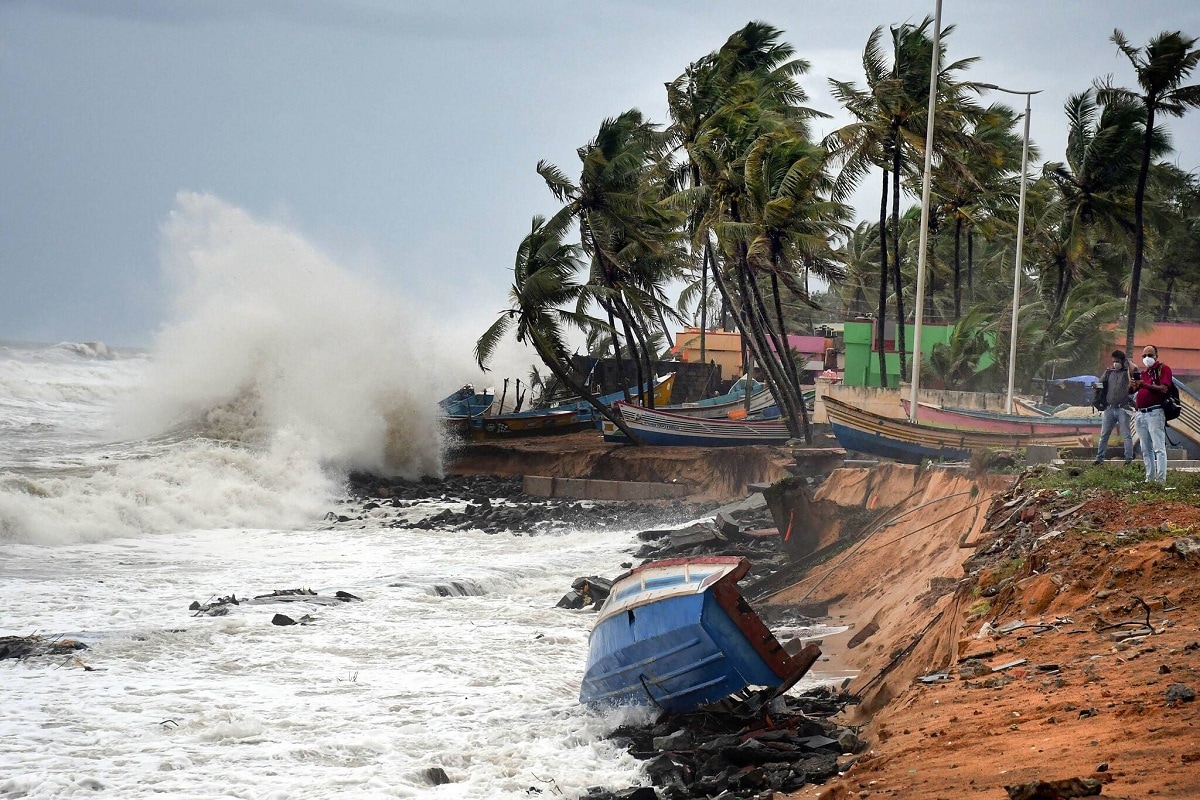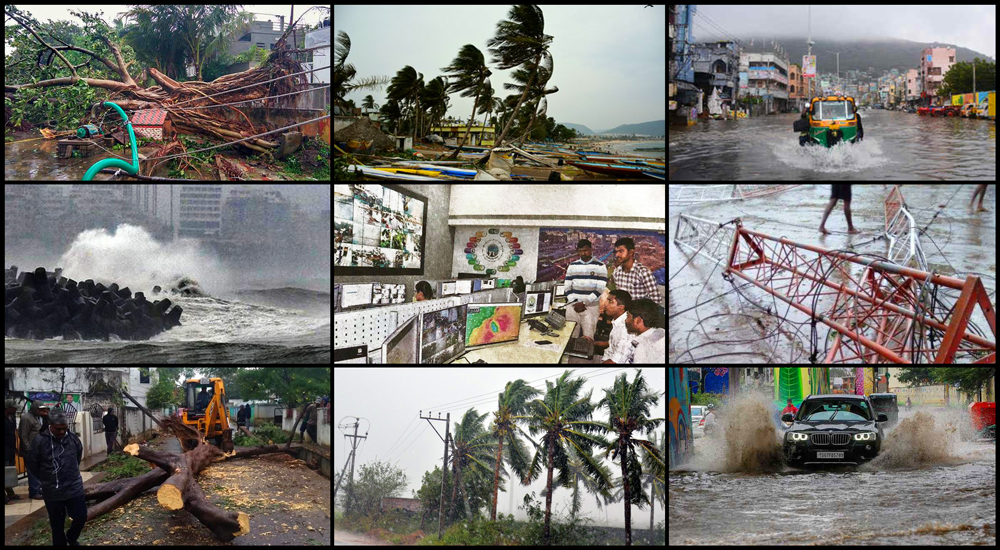India Prepares For The Cyclonic Storm Biparjoy To Safeguard The Extensive Damage To Infrastructure And The Economy.
The India Meteorological Department (IMD) predicts that Biparjoy will make an impact between Gujarat and bordering Pakistan's Karachi, with wind gusts of up to 150 km per hour.

Prime Minister Modi & Home Minister Amit Shah of India are holding review talks ahead of the severe cyclonic storm Biparjoy, which is expected to impact Gujarat in the coming days before going to Pakistan. While some detractors regard their hyper-preparation as biased towards their home state, the fact is that such natural disasters have a devastating impact not only on lives but also on the infrastructure and economy, which have experienced good recovery over the years.
The India Meteorological Department (IMD) predicts that Biparjoy will make an impact between Gujarat and bordering Pakistan’s Karachi, with wind gusts of up to 150 km per hour.

The IMD has issued a “red” signal for Gujarat’s Saurashtra and Kutch beaches, predicting “extensive” damage. However, the issue goes beyond the immediate damage, raising concerns about the need to improve infrastructure development and economic governance in the Asian country in response to the increased frequency of cyclones, which scientists say is a visible result of global warming.
Asia as a whole, and nations like India in specific, need to be well better prepared for severe climate and weather shocks, which are possible to get worse as the impact of climate change becomes clearer, said Swarup Gupta, financial services lead as well as head of the Economist Intelligence Unit’s ESG ratings service.
Thousands of people and animals have already been evacuated, reducing revenue for daily wage earners like fishermen, port employees, and oil rig personnel. Corporate exports are being disrupted, and the government will need to commit significant cash for post-disaster aid activities.
Because of the impending natural disaster, Reliance Industries, the operator of the biggest in the world refining plant, has halted shipping of diesel and various other oil products from Sikka port in Gujarat. This port, with a capacity of 704,000 barrels a day, is critical in delivering diesel to Europe, which has become increasingly reliant on Asian imports as a result of European Union sanctions against Russia.

Adani Group, a competitor of Reliance, has also temporarily suspended operations in the region. Adani Ports’ Mundra business, India’s busiest container port, has ceased operations, as have the oil ports of Vadinar and Sikka, as well as Kandla, Okha, Bedi, and Navlakhi. Mundra is India’s largest commercial port and the location of the country’s main coal import facility.
Cyclone Fani allegedly caused a loss of Rs 9,336.26 crore in Odisha, India, in 2019. According to a UN assessment, India sustained economic damages of over Rs 1.16 lakh crore as a result of storm Amphan, which struck the India-Bangladesh border in May 2020 during the second wave of the epidemic, which had shut down economic operations and put millions jobless.
A year later, the country’s eastern portion was hit by cyclonic storm Yaas, with media sources estimating the economic impact to West Bengal, India, at $2.76 billion. The overall economic loss to the three eastern states where Yaas struck – West Bengal, Odisha, and Jharkhand – was projected to reach $7 to $8 billion.
Aside from the instant devastation, the aftermath of a strong storm has far-reaching repercussions, ranging from probable rises in food prices owing to crop damage to the financial strain put on state and federal governments seeking to reduce budget deficits.

Healthcare services are struggling to keep up with the flood of injured and displaced people. Power outages leave towns in the dark, while broken water delivery systems leave them thirsty. Transportation networks, which are vital to trade and business, are severely disrupted. This has a ripple impact across the economy, influencing the timely transportation of products and producing a ripple effect that stretches across industries.
Agriculture, the backbone of India’s economy, suffers the brunt of the cyclonic wrath. Crops are destroyed, and lush fields are turned into wastelands in India overnight.
Infrastructure development has been a priority for India’s governing Modi administration, which budgeted a record 10 lakh crore rupees in this year’s annual budget. Furthermore, India intended to spend more than 100 lakh crore rupees over five years on the National Infrastructure Pipeline, or a collection of social and economic infrastructure projects in India.
The cyclone’s first impact is in the form of broken infrastructure. Cyclones devastate roads, bridges, and electricity lines built using public and borrowed money.
Business activity slows, and investor confidence wanes when infrastructure is disrupted and industries are devastated. GDP growth, which was previously promising, is now stumbling under the weight of these disasters.

As per The Economist Intelligence Unit’s ESG rating service, India ranks 144 out of 151 nations on the environment pillar, indicating that much work remains to be done in terms of decarbonisation, waste and wastewater management, and environmental stewardship to mitigate the impact of climate change in India.
India’s government has made some initiatives to strengthen climate resilience, but more has to be done.
A UNDP-sponsored effort has worked to strengthen the resilience of coastal ecosystems, benefiting over 10 million people. The country’s NDRF has also significantly increased its capacity, garnering widespread appreciation for its recent operations in Turkey following deadly earthquakes.
However, among the significant difficulties that lay ahead in India is the wider implementation of climate-resilient infrastructure that takes into consideration the needs and concerns of vulnerable people, as well as the higher adoption of climate-resilient livelihoods.
According to the RBI, the total investment in climate change adaptation in India will exceed Rs. 85.6 lakh crore by 2030. According to the central bank‘s research, financing to repair the infrastructure deficit created by climate disasters might amount to at least 2.5 per cent of annual GDP.
India’s emphasis on non-climate resilient infrastructure and economic initiatives may be a waste of money. With a huge population and a low per capita income, the government may have to prioritise investment to reduce the impact of natural disasters on livelihoods.
Conclusion.
Cyclonic storm Biparjoy, which is projected to impact Gujarat in India and adjacent Pakistan, has the potential to wreak significant damage to infrastructure and the economy. Evacuations have impacted daily wage earners, while big firms like Reliance Industries and Adani Group have ceased activities in the vicinity. The brunt of cyclonic fury falls on infrastructure, producing a halt in commercial activity and forcing the country’s GDP growth to stagger under the weight of natural disasters.
Proofread & Published By Naveenika Chauhan



